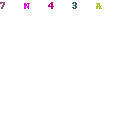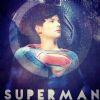The concept of a three-team international series known as a tri-series in cricket originated with the World Series Cricket program sponsored by Kerry Packer. Packer was keen to exploit what he saw as strong interest in ODI cricket, and staged long tri-series amongst teams from Australia, West Indies, and The rest of the World in the 1977-78 and 1978-79 seasons. These tournaments have never been awarded either One Day International or List A status.
When the World Series Cricket schism ended in 1979-80, the tri-series format was retained. Throughout its existence, the tournament was held as a series of One Day Internationals, featuring a round-robin played amongst the three teams, followed by a finals series played between the top two. The current format, as well as the most common format over the years, is that each team plays each other four times in the round-robin, followed by a final, which is decided by a best-of-three series (with the third match played only if necessary), for a total of fourteen or fifteen ODIs played through the summer.
The basic format has been unchanged throughout the tri-series' history, but specific details have varied:
- From 1980-81 to 1985-86, and in 1998-99, each team played the others five times during the round robin
- In 1980-81 and 1981-82, the finals series was best of five
- In 1994-95 only, a quadrangular series featuring two touring sides, Australia and Australia A was played; each team played the others twice during the round robin, followed by a best-of-three finals series. Matches played against Australia A are considered List A matches, but not ODIs.
- In 2004-05 only, each team played the others only three times during the round robin
Over its duration, the series has taken on several mostly commercial names:
- Benson & Hedges World Series Cup (1979-80 to 1987-88)
- Benson & Hedges World Series (1988-89 to 1995-96)
- New laws limiting tobacco advertising in Australia forced the name to change after 1995-96
- Carlton and United Series (1996-97 to 1999-2000)
- Carlton Series (2000-01)
- VB Series (2001-02 to 2005-06)
- Commonwealth Bank Series (2006-07 to 2012-13)
- Carlton Mid Series (From 2014-15)
After the 2007-08 season, the tri-series format was abandoned. For three seasons (2008-09 until 2010-11), Australia still played ODIs against two touring teams, but these were staged as separate ODI series against a single opponent. The Commonwealth Bank of Australia was still the naming rights sponsor of ODI cricket in Australia during these summers, so all series were still known as the Commonwealth Bank Series during this time.
The tri-series format returned in the 2011-12 season, but according to the ICC Future Tours Programme, this will not herald a permanent return to the format. A shortened Australian Tri-Series is scheduled for the 2014-15 season in the lead-up to the 2015 World Cup in Australia; otherwise, all ODI series that Australia is scheduled to host up to the 2019-20 season will be played against a single opponent.[2]





















comment:
p_commentcount